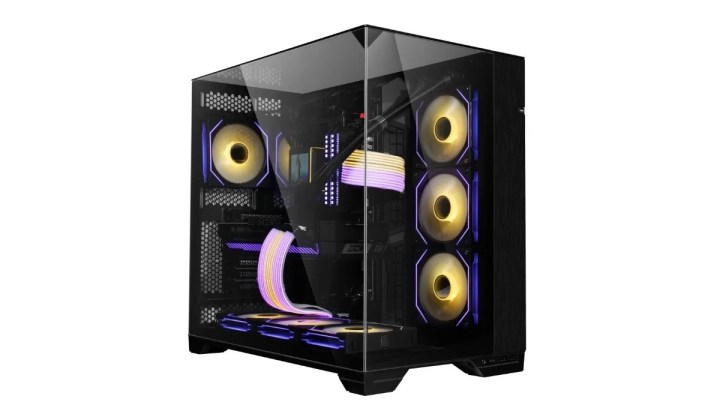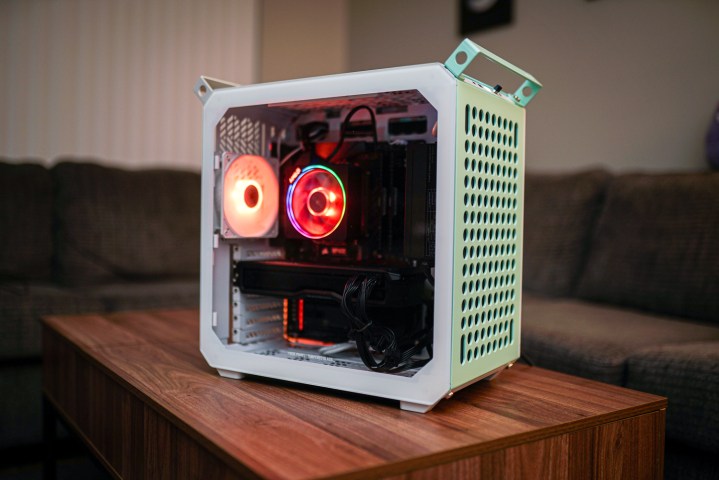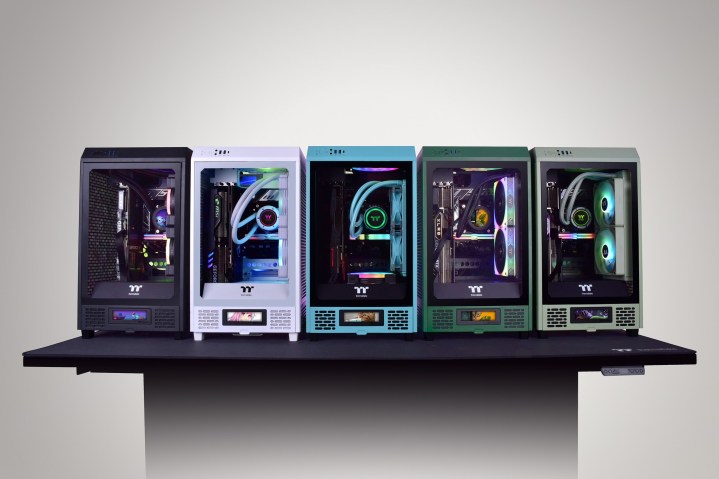Choosing the right PC cabinet is crucial for ensuring compatibility, efficient cooling, cable management, aesthetics, and overall functionality of your computer build. Thus, it is highly recommended to take out time to research and choose a case that aligns with your needs and can contribute to a satisfying and well-performing PC setup.
Speaking of which, we saw some really interesting new PC cases last year catering to various needs and requirements of the consumers as well as including some innovative features. While I do lean towards sleek and compact cases, I think there was a plethora of attractive cases in almost every segment that got me interested. But since I cannot go through every single one of them, here are some recent PC cases that get me very exciting for what’s coming next.
Lian Li O11 Vision

Lian Li’s O11 series of cases include various iterations, but last year, the company introduced the O11 Vision. The new case offers pretty much all the features available on the O11 Dynamic, but the ‘Vision’ part emphasizes the three-sided tempered glass that lets you truly appreciate your components.
Made in collaboration with the PC Master Race (PCMR) community, the O11 Vision features a dual-chamber design that allows for ease of installation and cable management without compromising on the overall aesthetics. It is a large case and can support up to E-ATX motherboards, two 360mm radiators, a 240mm radiator on the back, and up to eight fans for the ultimate cooling experience.
Of course, the highlight feature is the panoramic triple-tempered glass panel setup. The side, front, and top glass panels are seamlessly connected at the top corners through a discreet magnetic mounting key concealed behind a tiny gradient finish. Since there are no support frames or columns, you get an unobstructed view of the inside. The case also includes an adjustable motherboard tray, while the modular side panel and radiator bracket design ensure easy installation and easy access to the system.
Hyte Y70 Touch

Continuing the trend of dual-chamber designed cabinets, Hyte introduced an update to its popular Y60 case. Featuring a similar angular design, the new Y70 Touch is larger, and instead of the unique third glass panel design approach, the company slapped a massive 14.1-inch 4K touch display panel. We’ve seen displays on cases before, but nothing like this; plus, it technically doubles as a secondary screen for your system as it can be connected directly to the system graphics output using DisplayPort.
The case is made of high-quality material and offers unique ventilation design patterns we saw on the Y60. It also comes with a built-in PCIe riser cable, so you can install your GPU vertically and show off your expensive GPU. For cooling, the case offers the option of installing a total of nine 120mm fans at the bottom, top, and side panel, while you can install a 360mm or smaller radiator at the top or side.
The large LCD is an eye-catcher and probably the perfect fit for the case. It is large and sharp and offers touchscreen controls, essentially allowing you to show and interact with widgets or even play games. Primarily, the display will be useful to showcase system information like temperatures, fan speeds, etc., as well as control media, show the daily news and weather, and so on.
Fractal Design Terra

There are tons of mini-ITX cases to choose from featuring a sandwich-style layout, but the Fractal Design Terra is one of a kind. It looks stunning with its anodized aluminum finish available in Silver, Graphite, or Jade.
That last color option, in particular, is my favorite, as the subtle green hue is unlike anything I have seen on a PC case. Another unique aspect of this mini-ITX case is the Walnut accent panel on the front. The company says it is carved out of wood and every single unit should offer a unique finish.
The case is pretty compact, offering just 10.4L capacity, making it one of the smallest mini-ITX cases on the market. To offer enough flexibility the case comes with a central moveable motherboard spine. This lets you adjust and prioritize space for the dedicated graphics cards or taller CPU coolers.
The case has been designed with CPU air cooling in mind, but there is a certain scope for installing a 120mm radiator. As for air cooling, the case can accommodate up to a 77mm air cooler in height. It also comes with a 2.5-inch drive bay as well as a PCI-e Gen4 riser cable.
Cooler Master QUBE 500 Flatpack

Cooler Master is a well-known name in the PC industry, and the company launched one of the most interesting cases last year called the Qube 500 Flatpack. It is essentially a DIY or build-your-own PC cabinet where all the bits and pieces are packed in a flat box, hence the ‘Flatpack’ in the name.
It’s an interesting take on the entire process of PC building, where you also get to build the entire case on your own. At the same time, Cooler Master believes that selling a dismantled case can also potentially reduce the resources involved while shipping.
The Qube 500 Flatpack may not be for everyone, but it is the perfect weekend project for someone like me who loves tinkering with PC hardware. Best of all, it doesn’t cost a fortune as it starts at about $80, which isn’t bad at all.
As for the case itself, it is a mid-tower that comes with ventilated panels with mesh filters and a glass side panel and can accommodate full-size motherboards and power supplies. It is also compatible with 280mm water coolers, up to 172mm air coolers, 360mm GPUs, and multiple fan mount options at the top, bottom, and rear. The case also has a built-in vertical GPU bracket, an additional side bracket to install radiators or fans, and support for a wide range of custom accessories thanks to the all-over hole pattern.
Thermaltake Tower 200

Thermaltake expanded its Tower lineup of cases with Tower 200, which continues to follow a non-conventional PC case design that gives an unobstructed view of your internal components. It has been one of my favorite cases from 2023 because of the smartly designed internal layout and the fact that it looks good from almost any angle.
The Tower 200 has the same design as the previous models like the Tower 100 and Tower 500, but this one offers just the right size and form factor. There’s a large tempered glass panel on the front with ventilated mesh panels on the sides, bottom, and top.
The case can accommodate pretty beefy components, including standard-size power supplies of up to 220mm, a 280mm radiator, and even a full-size RTX 4090 (up to 380mm). The case also offers various fan mounting options on the top, bottom, and rear for extra airflow and 2.5-inch and 3.5-inch storage mounting points. The only downside is that it can only fit a mini-ITX motherboard, even though there is just about the space for an m-ATX motherboard.
The case comes in a variety of colors, including black, Snow, turquoise, Racing Green, and Matcha Green, which is refreshing to see. Thermaltake also sells a special LCD panel for the Tower 200 that can be installed below the front glass panel to showcase GIFs, system information, and more.
Editors' Recommendations
- I can’t wait to try out these upcoming mini-ITX cases
- This PC case has a touchscreen, but it’s way more than a gimmick




